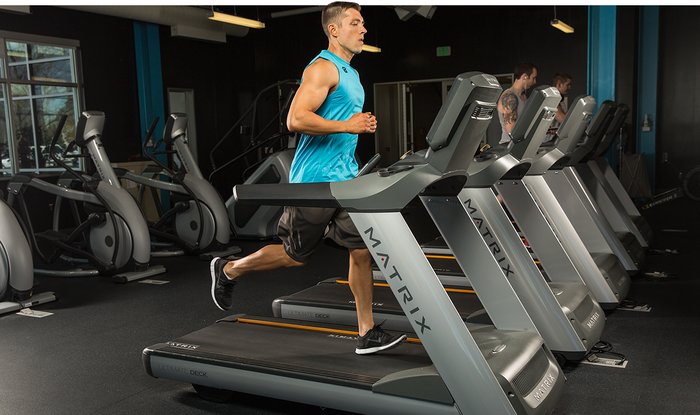Q. What's The Best Time Of Day To Work Out?
That's easy: It's any time you'll do it most consistently! The benefits of exercise are noticeable only when you do it on a regular basis, so if the only time you're able to make it to the gym consistently is at 6 a.m., then I'd say 6 a.m. is the best time for you to train.
But let's imagine a scenario in which you had the ability to completely clear your schedule—no job, no school, no family obligations—and could train at any time. Does this ideal, train-whenever-you-like situation change my answer? Why yes, yes it does.
Clocking Your Performance
It's well-documented that maximal strength and performance can fluctuate throughout the day, with lows occurring early in the morning and peak values occurring late in the afternoon.[1-3] These variations in performance are most likely to occur with high-intensity, short-duration exercises—think weightlifting, sprints, high-intensity interval training—and are less noticeable during submaximal, lower-intensity activity like steady-state, moderate-intensity exercise.

Not a morning person? Don't worry: working out any time of day is beneficial. Tailor your workouts to your own schedule.
I can tell you now that while I formerly thought those who battled alongside the after-work gym crowds were crazy, I now believe they're on to something: Put simply, training later allows you to enjoy several physiological advantages.
One possible explanation for the change in strength throughout the day is the change in your body temperature, which typically peaks later in the afternoon. The increase in core temperature could exert a passive warm-up effect, enhancing metabolic reactions, increasing the flexibility of ligaments and tendons, and increasing the conduction velocity of action potentials, or the speed at which an impulse travels from your nerves to your muscle.[4]
Beyond Body Heat
This change in body temperature throughout the day may partially, but not solely, explain the variations in short-term muscle strength and power performance. There's also evidence to suggest that your body struggles to recruit muscle fibers in the morning, with several studies showing lower EMG activity in the early hours of the day.[5,6] This won't necessarily affect low-intensity activity, but good luck trying to set PRs when you're recruiting only 75 percent of your muscle fibers!
And, of course, there are the fluctuations in your hormone profile that occur throughout the day. Both testosterone and cortisol peak in the morning, then see reductions in concentrations in the evening and overnight. The morning rise in cortisol is counterproductive if you train in the morning, since it can increase muscle breakdown, but it's thought that the concurrent rise in testosterone in the a.m. may be the body's attempt to counteract the effects of cortisol.

Training at the same time each day can help your short-term performance. Just commit to getting to the gym on a regular basis!
Resistance training performed in the evening has been shown to lower cortisol levels, reducing the catabolic and increasing the anabolic environment, which could therefore optimize the hypertrophic adaptations associated with resistance exercise.
The Verdict
It's difficult to say at this point if these short-term changes can lead to long-term adaptations in muscle size and strength, but it appears there's not much of a difference in muscle size between groups who train regularly in the morning or in the evening hours.[7]
For all you early-morning gym-goers (myself included), it may appear you're limiting your gains by training while the rest of the world sleeps, but there are a few things you can do to even out the playing field. If you can, train in a warmer environment. This can help raise your core temperature to an approximation of what it would be if you trained in the late afternoon.
If you're not a fan of training in the heat, just extend your warm-up by an extra 5-10 minutes to help increase the flexibility and mobility of your muscles and ligaments. To help blunt the cortisol response, eat a small piece of fruit before hitting the gym, and sip on BCAAs during your workout to minimize muscle protein breakdown.
If all else fails, just be consistent with your workout times. Regular training at a specific time of day can modify the typical day-to-day changes in short-term performance. That means that if you repeatedly train in the morning hours, you can improve typically poor morning performance to the same or even higher level as what's observed in the late afternoon.
The most important factor is to commit to going to the gym on a regular basis, and stick to it!
References
- Chtourou, H., Chaouachi, A., Driss, T., Dogui, M., Behm, D. G., Chamari, K., & Souissi, N. (2012). The effect of training at the same time of day and tapering period on the diurnal variation of short exercise performances. The Journal of Strength & Conditioning Research, 26(3), 697-708.
- Chtourou, H., Driss, T., Souissi, S., Gam, A., Chaouachi, A., & Souissi, N. (2012). The effect of strength training at the same time of the day on the diurnal fluctuations of muscular anaerobic performances. The Journal of Strength & Conditioning Research, 26(1), 217-225.
- Souissi, N., Gauthier, A., Sesboüé, B., Larue, J., & Davenne, D. (2002). Effects of regular training at the same time of day on diurnal fluctuations in muscular performance. Journal of Sports Sciences, 20(11), 929-937.
- Bernard, T., Giacomoni, M., Gavarry, O., Seymat, M., & Falgairette, G. (1997). Time-of-day effects in maximal anaerobic leg exercise. European Journal of Applied Physiology and Occupational Physiology, 77(1-2), 133-138.
- Gauthier, A., Davenne, D., Martin, A., Cometti, G., & Hoecke, J. V. (1996). Diurnal rhythm of the muscular performance of elbow flexors during isometric contractions. Chronobiology International, 13(2), 135-146.
- Callard, D., Davenne, D., Gauthier, A., Lagarde, D., & Van Hoecke, J. (2000). Circadian rhythms in human muscular efficiency: continuous physical exercise versus continuous rest. A crossover study. Chronobiology International, 17(5), 693-704.
- Sedliak, M., Finni, T., Peltonen, J., & Häkkinen, K. (2008). Effect of time-of-day-specific strength training on maximum strength and EMG activity of the leg extensors in men. Journal of Sports Sciences, 26(10), 1005-1014.

